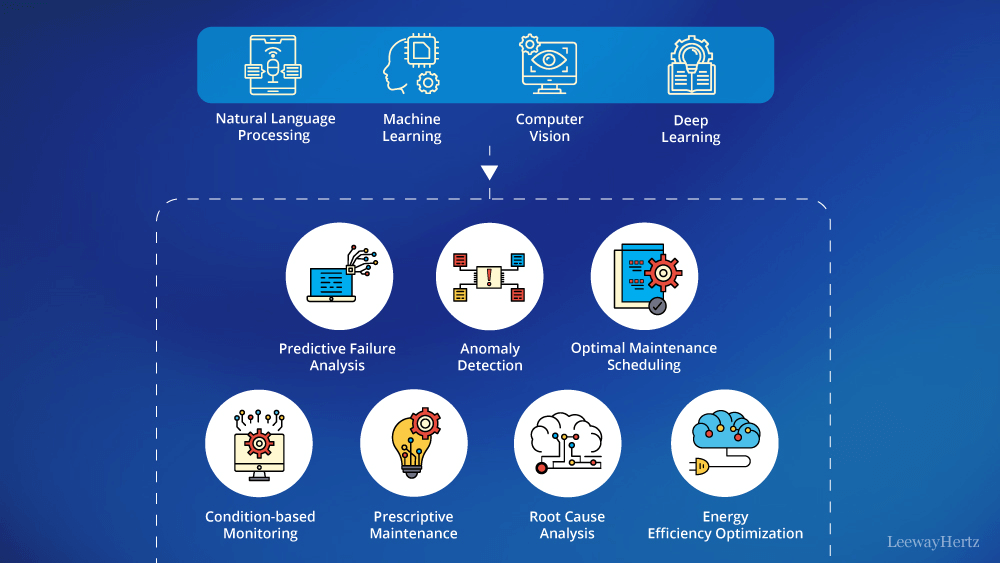Industries ceaselessly look for strategies to streamline their forms, diminish downtime, and spare upkeep expenses in today’s more connected environment. Predictive maintenance is one viable approach that has emerged to unravel these issues (PdM). The potential of huge data analytics is driving a revolution in India in predictive maintenance (PdM), which is the long term of effective asset management.
Organizations can presently transition from reactive repairs to proactive, data analytics solutions programs by utilizing machines’ massive sums of data. This results in noteworthy cost decreases, higher uptime, and enhanced operational effectiveness. Utilizing advanced data analytics technologies, businesses may anticipate equipment breakdowns and take proactive maintenance measures to maximize asset life span and uptime.
India’s data era is developing exponentially thanks to the spread of associated devices, Industrial IoT (IIoT), and sensors. When properly utilized, this enormous data bank has enormous potential for streamlining mechanical processes. PdM stands out as a crucial application that analyzes sensor information, upkeep history, and working factors with sophisticated analytics.
Overview of Predictive Maintenance
Predictive maintenance, a proactive approach to maintenance, employments machine learning and data analytics to estimate the likelihood of equipment breakdown. With predictive maintenance, organizations can minimize superfluous maintenance tasks and save downtime by intervening as it were when vital, unlike ordinary reactive or planned maintenance approaches, which can be expensive and inefficient.
The basic thought of predictive maintenance is to assemble and look at data from different sensors and sources to spot patterns and abnormalities that point to possible equipment breakdown. Ventures can continuously monitor key performance indicators (KPIs), including temperature, pressure, vibration, and energy consumption, to identify early warning signals of potential problems and take remedial action before they become costly failures.
The Function of Analytics-Based Products
Solutions for data analytics are basic for making predictive maintenance plans work. These technologies assess enormous volumes of data in real-time and derive profitable insights by combining a few strategies, such as machine learning, artificial intelligence, and statistical examination. Through the utilization of data analytics, foundations can finish the taking after goals:
1. Early Error Identification: Early failure and anomaly detection is one of the most advantages of data analytics solutions for predictive upkeep. By continuously checking equipment performance information, these technologies can distinguish minute variations from standard operating settings that can be signs of possible issues. Early failure identification minimizes the impact on generation operations and avoids costly downtime by enabling support groups to address issues proactively.
2. Maintenance Based on Conditions: State-based maintenance, which bases maintenance actions on the equipment’s actual state instead of a preset timetable, is made possible by data analytics technologies. By examining past performance data and current sensor readings, establishments can find out the ideal moment for maintenance methods like lubrication, calibration, or component replacement. This strategy ensures that imperative resources are fittingly kept up while lessening the chance of needless repair.
3. Modeling that Predicts: Progressed data analytics strategies, such as machine learning and predictive modeling, empower businesses to predict when equipment breaks down precisely. Predictive models utilize past failure information analysis to find designs and correlations indicating when a particular system or component will likely fail. This maximizes the effectiveness of maintenance operations by permitting support groups to plan mediations and prioritize resources.
4. Optimization of Asset Performance: Data analytics solutions help businesses find zones for optimization by offering insightful data on the viability and execution of their assets. Companies can discover inefficiencies and generally improve asset execution by looking at equipment utilization, energy utilization, and other critical execution indicators. This lower running costs whereas moreover generally increases productivity and prolonging equipment life.
Putting a Successful Predictive Support Strategy into Practice
In spite of the fact that predictive maintenance tactics can be significantly improved by data analytics apparatuses, executing an efficient PdM program involves cautious planning and implementation. Here are a few significant things to keep in mind:
1. Integration and Quality of Data: A predictive maintenance initiative’s viability depends on having high-quality data. Organizations must ensure the accuracy, consistency, and dependability of information gathered from sensors and other sources. A complete understanding of the wellbeing and execution of equipment also requires joining data from diverse systems and sources, including SCADA frameworks, venture resource administration (EAM) frameworks, and Internet of Things (IoT) devices.
2. Flexibility and Adaptability: Businesses must ensure that their data analytics frameworks are versatile and adaptable sufficient to handle growing data volumes and changing commerce requirements as they create their prescient upkeep initiatives. Adaptability and flexibility are given by cloud-based analytics solutions, which empower enterprises to extend their predictive maintenance capacities without having to form noteworthy foundation investments.
3. Cooperation and Data Trade: Effective predictive support activities require cross-departmental participation and knowledge trade. Maintenance groups, information scientists, engineers, and operational staff must collaborate to set up support techniques, create forecast models, and carry out remedial measures. Viable communication and teamwork are basic to drive persistent improvement, share bits of knowledge, and align targets.
4. Continuous Evaluation and Advancement: Predictive maintenance is a continuous observation, evaluation, and upgrade preparation or maybe than an isolated event. Businesses have to continually survey the execution of their equipment, progress their predictive models, and alter their maintenance plans in response to moving showcase demands and operational circumstances. Organizations may maximize the esteem of their predictive maintenance endeavors and upgrade asset execution by receiving a continuous change culture.
In summary
To sum up, data analytics solutions are basic to creating fruitful predictive maintenance plans. By using advanced analytics approaches, organizations may improve resource execution, predict equipment failures, optimize upkeep plans, and spot issues early.
However, for execution to be successful, meticulous planning, high-quality data, departmental cooperation, and a dedication to continuous advancement are required. Businesses may completely realize the benefits of predictive maintenance and get a competitive advantage in today’s fast-paced marketing with the suitable strategies and technologies.

